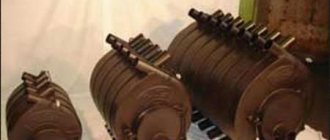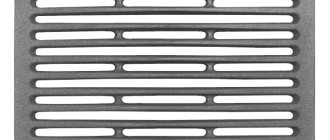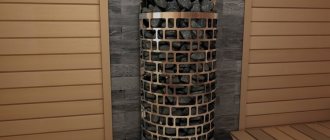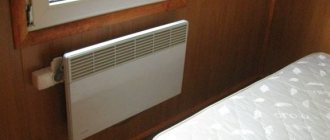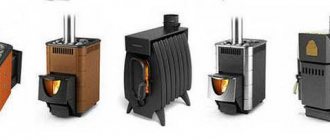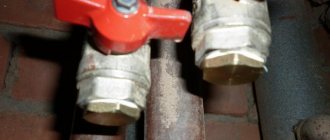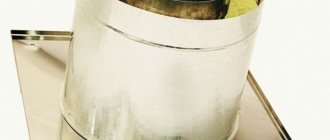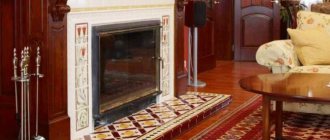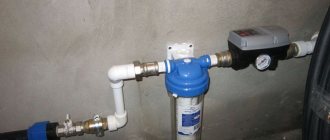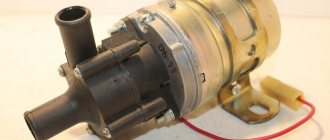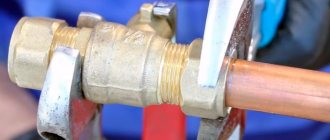What is a fire door
Fire door
Heat is released by the stove through the body due to its heating from fuel combustion. This process is accompanied by the release of high temperature and requires regular replenishment of fuel. To do this, install a combustion door in a brick oven. Through an opening hole, fuel is loaded into the chamber, and it is evenly distributed and mixed.
Proper and technically verified installation of the oven door into the finished oven ensures its durability, convenience and safety of operation. The door should fit snugly against the walls of the fireplace and open easily without creaking, backlash or jamming. To do this, you need to firmly and securely fix the stove door in the masonry, choosing the most proven methods and products that are suitable in terms of technical and aesthetic characteristics.
Types of doors depending on material
Depending on the material used in production, oven doors can be of different types. We will consider each of them in as much detail as possible.
Heat-resistant glass doors
Recently, this type of door has been used most often in furnaces, due to its decorative component and the ability to observe the flames. Glass doors are distinguished from other types by a completely individual, unique style that offers an incredible view of live fire. To make such a door, heat-resistant glass is used, which is made with the addition of quartz and crystal ceramics. Because of such additives, glass oven doors become as safe as possible for use and visually attractive.
The production of glass doors comes in several types:
- Flat, that is, one glass with a slight thickening.
- In segmental, that is, the design consists of three glasses at the same time.
- Circular.
Typically, the glass is inserted into a metal frame, which can be designed in any way. You can also often find stove doors that are decorated with forging, casting, mosaics, and even tinted and stained glass trim. For ease of use, lifting and sliding mechanisms have been invented.
The most striking disadvantage of such a door is that the glass quickly becomes covered with a layer of soot. But this problem is completely solvable if, at the design stage of the furnace, a soot burning system was installed, which helps the carbon deposits leave during the operation of the furnace.
Iron doors
These doors are made entirely of metal and have been in use for a long time. They retain heat inside the oven and also have a high level of fire safety. These door options are the most reliable and easy to use. You can make an iron oven door yourself, or you can purchase a factory-made one.
The main advantages of metal doors are:
- Relatively low cost. For example, in comparison with a glass structure, an iron one is several times cheaper, but the quality even surpasses the first one. Typically, such doors are used for stoves installed in a country house or in a bathhouse, where functionality is important and appearance does not play a special role.
- Durability and strength. Metal doors last for decades with proper use and timely treatment against corrosion.
Cast iron doors
Such designs have also been known for a long time and are popular. But with the advent of glass, their installation was reduced to dachas or baths, since everyone wants to watch the play of fire inside the house. Cast iron oven doors, like metal ones, are very durable and reliable, and also have high fire resistance.
Oven doors can be different not only in material, but also in appearance. For example, completely black or silver doors are available. Some models may have a function for connecting the complete sealing of the firebox. Thanks to this addition, you can automatically regulate the operation of the stove and operate it as comfortably and efficiently as possible.
How to choose
Installation of furnace doors is carried out after complete shrinkage of the brickwork and the final formation of the combustion opening. When using the hearth, the moving part will be subject to constant dynamic and thermal loads, so the choice of material for it is limited.
The following options exist:
- Cast iron. The alloy is durable and resistant to corrosion. However, the shape of the valves is far from perfect; the metal is heavy, fragile, and can crack if water gets on it. Installing a door in an oven is fraught with significant difficulties.
- Stainless steel. The material can be called universal, since it is not afraid of sudden cooling, does not rust, and installing it in an opening is quite simple. Stainless steel looks good and is easy to clean from carbon deposits.
- Fireproof glass. Panoramic doors are popular because they create a feeling of comfort from the sight of burning logs and allow you to control the availability of fuel. There is a risk of destruction of the canvas upon contact with water.
The price of products also varies, but this is not the main criterion when the safety, durability of the heater and the comfort of its use are at stake.
Oven door functions
Its most important function is to prevent sparks from falling from the stove onto the floor. In addition, it helps eliminate drafts that occur when the firebox is open. A closed stove can be left unattended and walked away with full confidence that not a single ember will fall out. In addition, the door serves to suppress smoke in the house.
If it is made of heat-resistant glass, then due to the transparency of the material, you can observe the burning fire. What is very important is that the smell of burning does not enter the house. If the firebox is closed, the efficiency of burning wood increases, which leads to less wood consumption.
Thanks to modern technologies, oven doors can be made with an air-cooled frame, as well as with special non-heating fittings. In addition, a blowing system can be installed on the oven door.
Doors equipped with such options will help ensure that even small children are safe around the stove. If the handle is removable, this will help prevent a child from accidentally opening the firebox and getting burned.
How to install the firebox door of a brick oven
Installing a fire door on metal plates
Before fixing the door in a brick oven with your own hands, you need to check the accuracy of the opening geometry and the functionality of the kit. Damage, distortions and difficulties with opening are not allowed.
You can install the sash in the following ways:
- On the wire. This type of fastening is often used by professional stove makers, as it is considered the most reliable. Wire made of an alloy of nickel and chromium is used, since it is practically insensitive to high temperatures and aggressive combustion products. Before installation in place, the cores are threaded into loops, after which, in a tightly stretched state, they are pressed with bricks at a distance of two or more stones. The disadvantages of this technique are labor-intensive and impossible to repair.
- On metal plates. The option is simple but reliable. The frame from the corner is embedded with one edge into the walls of the hearth, after which it is additionally fixed with spikes. To compensate for uneven thermal expansion, silicon thermal insulation is placed under the metal.
- On self-tapping screws or anchors. Experts do not recommend this type of installation. Its essence is that the frame is screwed through several holes to the wall along its outer side. Since the weight of the set is quite large, and there are few connection points, they weaken very quickly, and the swing structure begins to dangle.
The set must be secured in the closed position to prevent distortions. To prevent spontaneous tilting of the sash when the valve is open, you need to give the frame a slight slope of 2-3 mm.
Preparation, list of tools
Before starting work, you need to determine and mark the place that the new stove will occupy.
The chimney pipe should be no closer than 15 cm from the roof rafters.
If you are doing masonry for the first time, professional stove makers advise you to practice in advance by making a model of the future stove from prepared bricks. Naturally, without a solution. This minimizes possible risks during real masonry, allowing you to learn from your mistakes, which can still be corrected in the layout.
The stove foundation requires preliminary waterproofing; its area must exceed the area of the stove.
When laying a new row, you need to control the absolute verticality of the walls.
To build a brick kiln, the following tools are needed:
- plumb line;
- trowel;
- roulette;
- putty knife;
- Bulgarian;
- knitting wire;
- building level;
- metal strips, corners;
- containers for cement and clay mortar.
What to do if the door doesn't stay on
If the masonry stones are cracked, it is necessary to disassemble and install new fragments.
The reasons for the loosening of the door may lie in the incorrect composition of the sealing solution or in leaving loose rings when fastening with wire, including without ledges during hard twisting. When fixed with bolts, abrasion of bricks occurs. Shaking leads to the formation of gaps and carbon monoxide escaping through them.
Repair options:
- Replacing anchors with steel inserts. To do this, cuts are made in the opening into which a fastening steel angle is inserted.
- Cutting the wire and changing the mounting method to bolts or built-in frames.
- Clearing the openings between the frame and the body from mortar and installing a new seal. The vacated areas are filled with heat-resistant glue, asbestos or ceramic cord, and a mixture of clay and asbestos.
These approaches are applicable when the masonry stones have retained their integrity. If they are cracked, you need to disassemble and lay new fragments on a heat-resistant mixture.
Door specifics
If you intend to make a door with glass inserts, you should first of all decide on its style
It is important that it matches the overall decoration of the room and the specifics in your particular case. So, for example, in small rooms it makes sense to make a double-leaf insert or a rising one to save space.
Both of these options are ideal for a corner fireplace. The main point that should not be forgotten is the selection of glass. It must have a heat resistance of at least 800 degrees - it is to this temperature that the flame usually flares up.
The prepared glass is inserted into the metal frame of the door itself, and that, in turn, is attached with hinges to the outer frame, which is fixedly fixed in the opening of the firebox. Wherein:
- a seal is installed on the inside to prevent smoke from entering the room;
- At the bottom of the outer frame, holes are made with adjustable plugs for air access to the firebox;
- Keep in mind that metal tends to expand greatly when heated, so the gap between the transparent insert and the frame is not made too large;
- When starting production, remember that the glass cannot be fixed tightly, because during installation it will need to be removed from the door;
- strips of fiberglass are inserted into the frame to seal it.
Features of glass door installation
Glass door
Despite the fact that a special transparent material is used for the doors, it must be fastened very carefully, since internal tension remains in any glass. Before installing the window, you need to carefully study the drawing included with it and the manufacturer’s recommendations.
After this, you need to see how tight the door is, how much effort is required to open and close it. If the process is difficult, you need to develop it before installing the door. When joining, it is necessary to leave damper gaps of at least 3 mm, which are then filled with a ceramic cord and a solution that compensates for the thermal expansion of the materials.
You can clean the window from soot only after it has completely cooled down. Use a soft cloth soaked in laundry or dishwashing detergent. The use of chlorine and abrasives is not permitted.
Self-production of forged doors
Real forging is very expensive, so you can use its imitation. But since the structure will not be so strong, it should be created on the basis of a frame. For this, two corners are used. The frame will not be solid, but only representing the lower part of the door and the part to which the hinges will be attached.
Forged doors are usually made as double hinged doors. Forging elements are welded onto the created frame. The main thing is that they are identical in pairs on two doors. Such fireplace doors will not stop flying embers, and this should be constantly remembered.
